Digital Poster
Advances in Breast Cancer Imaging
ISMRM & ISMRT Annual Meeting & Exhibition • 10-15 May 2025 • Honolulu, Hawai'i

 |
Computer Number: 33
1990. MRE-derived
Tumor Stiffness as a Non-invasive Technique to Characterize
Breast Tumors
A. Deavela, B. Griffith, J. Hawley, K. Thompson, A. Kolipaka
The Ohio State University, Columbus, United States
Impact: The
statistically significant consistency between the
non-invasive MRE-derived tumor stiffness
and the current gold-standards of diagnosis, histological grading and
DCE-MRI, means that breast tumor characterization through
MRE is possible while maintaining sensitivity and
specificity.
|
|
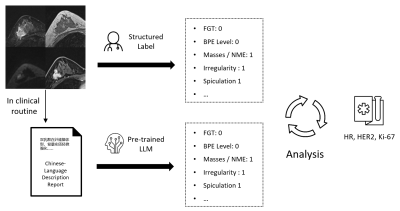 |
Computer Number: 34
1991. Evaluating
Large Language Model’s Potential to Optimize Structured MRI
Reporting in Breast Cancer Diagnosis
Y. Song, M. He, A. Wang, C. Wang, G. Yang
MR Research Collaboration Team, Siemens Healthineers Ltd, Shanghai, China
Impact: This study highlights the promising role of AI
in radiology, potentially enhancing diagnostic accuracy and
supplementing radiological expertise, especially in
multilingual and resource-limited settings.
|
|
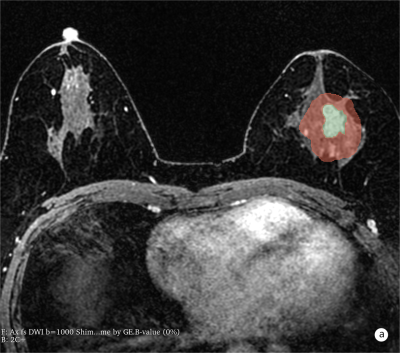 |
Computer Number: 35
1992. The
predictive value of preoperative Multiparametric MRI Radiomics
Model for axillary lymph node metastasis in breast cancer
Q. Xinyu, W. Wenjia, G. Lihong
Affiliated Hospital of Mongolia Medical University, Hohhot, China
Impact: These radiomics models serve as a noninvasive
tool to predict ALN metastasis in BRCA preoperatively.
|
|
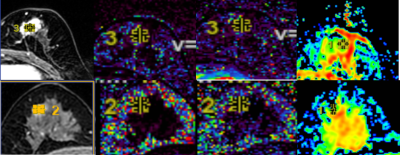 |
Computer Number: 36
1993. Predictive
value of DCE-MRI perfusion parameters for pathological grading
of invasive breast cancer in dense breasts
Y. Ou, L. Huang, B. Liu
Guiqian International General Hospital, Gui zhou, China
Impact:
Preoperative prediction of breast cancer pathological grading in dense breasts aids in optimizing patient treatment decisions.Our results indicate that these parameters can be used preoperatively to predict the pathological grading of breast cancer in dense breasts. |
|
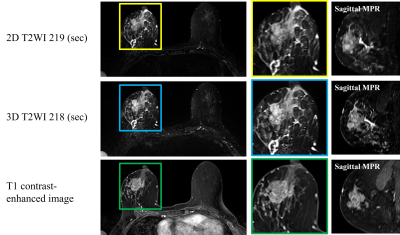 |
Computer Number: 37
1994. Improved
Breast Cancer Characterization with High-Resolution 3D
T2WI-SPACE at Equivalent Scan Times to Conventional 2D FSE-T2WI
K. Ichikawa, H. Satake, M. Iima, S. Ishigaki, Y. Kato, S.
Naganawa
Department of Radiological Technology, Nagoya University Hospital, Nagoya, Japan
Impact: Our
findings strongly support the feasibility of high-resolution
3D T2WI for implementation in clinical settings, offering
valuable information to contrast-enhanced MRI for breast
cancer characterization. This technique would show promise
for improving lesion differentiation, prognosis prediction,
and treatment efficacy assessment.
|
|
 |
Computer Number: 38
1995. Deep
Learning Reconstruction for Accelerating Synthetic MRI in Breast
Imaging: A Comparative Analysis of Accelerated and Standard
Protocols
F. Yang, Y. Jiang, Y. Xiao, J. Sun, B. Zhang, H. Liang
West China Hospital of Sichuan University, Chengdu, China
Impact:
Deep learning reconstruction for accelerating synthetic MRI is poised to enhance the clinical application of synthetic MRI in diagnosing breast diseases, thereby improving examination efficiency. |
|
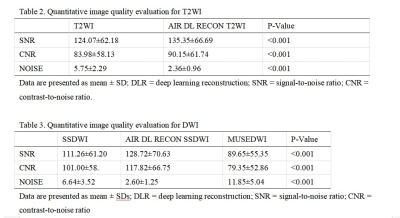 |
Computer Number: 39
1996. The
improvement of T2 weighted and diffusion weighted image quality
in breast magnetic resonance imaging by deep learning
reconstruction
s. z. Yang, y. Ji, z. t. Yu, n. Yao, J. Guo, H. LU
Tianjin Medical University Cancer Institute and Hospital, Tianjin, China
Impact:
This evaluation can be useful for reasonable T2WI and DWI breast imaging protocol picking based on deep learning methods, which may reducethepatients’ uncomfortable or help better lesion characterization. |
|
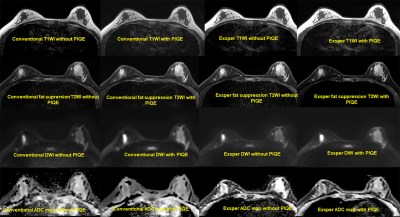 |
Computer Number: 40
1997. Super-Resolution
DLR (i.e. PIQE) and Expanded SPEEDER on Breast MRI: Image
Quality Improvement without Any Influence on Contrast and ADC
D. Takenaka, T. Ueda, K. Yamamoto, Y. Sano, M. Ikedo, M.
Ozaki, M. Yui, H. Nagata, M. Nomura, T. Yoshikawa, Y. Ozawa,
Y. Ohno
Fujita Health University School of Medicine, Toyoake, Japan
Impact: Super-resolution DLR (i.e. PIQE) and Expanded
SPEEDER had superior potential for image quality and spatial
resolution improvements without any influence on contrast
and ADC evaluation on breast MRI, when compared with
conventional parallel imaging (SPEEDER) and reconstruction
method.
|
|
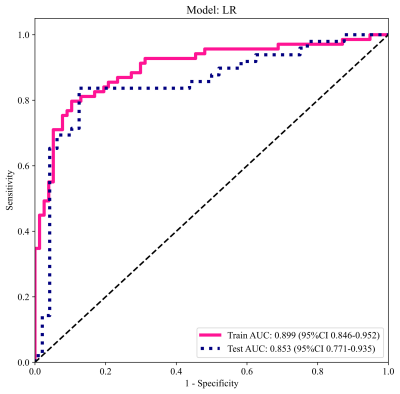 |
Computer Number: 41
1998. MRI-based
radiomics model for predicting pathologic response to
neoadjuvant therapy in HER2-positive breast cancer
J. Zhang
Shanxi Province Cancer Hospital, Taiyuan, China
Impact: MRI-based radiomics models may serve as a
noninvasive predictor of pathological complete response.
Accurate prediction of pCR is of great significance for
timely termination of neoadjuvant therapy to avoid toxic and
side-effects, and even for future exemption of breast
surgery.
|
|
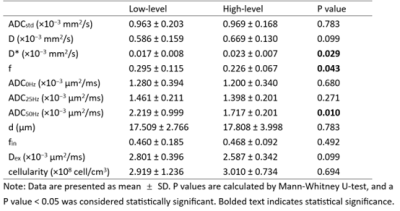 |
Computer Number: 42
1999. Combination
of time‑dependent diffusion MRI and Intravoxel Incoherent Motion
for Predicting NPI and Molecular Subtypes of Breast Cancer
L. He, Z. Liu, T. Ai
Department of Radiology, Tongji Hospital, Tongji Medical College, Huazhong University of Science and Technology, Wuhan, China
Impact: The integration of td-dMRI and IVIM provides a
new perspective for characterizing breast cancer by
comprehensively taking the cellularity, vascularity, and
microstructure of tissues into account, thus having
potential clinical utility in the prognostic estimation and
personalized treatment strategies.
|
|
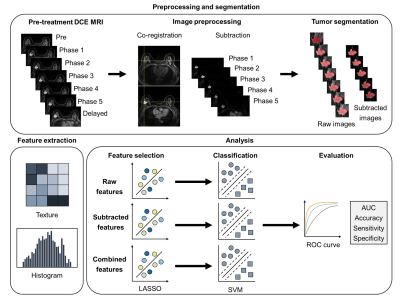 |
Computer Number: 43
2000. Prediction
of response to targeted therapy in HER2-positive breast cancer
using MR radiomics
T-N Hung, C-F Lee, W-P Wu, C-F Lu
National Yang Ming Chiao Tung University, Taipei, Taiwan
Impact: This study demonstrated that combining raw and
subtracted dynamic contrast enhancement images could enhance
response prediction to targeted therapy in HER2-positive
breast cancer. Our findings can facilitate personalized
treatment for breast cancer patients.
|
|
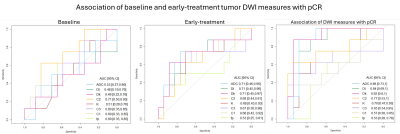 |
Computer Number: 44
2001. Advanced
DWI Models for Early Prediction of Pathologic Complete Response
in Breast Cancer Treatment: Preliminary Results in a Multicenter
Trial
D. Biswas, P. Bolan, D. Malyarenko, J. Ricks, M. Bryant, I.
Li, A. Kazerouni, B. Moloney, X. Li, D. Turley, J. Specht,
S. Dintzis, H. Rahbar, T. Chenevert, J. Holmes, W. Huang, S.
Partridge
University of Washington, Seattle, United States
Impact: ADC and advanced DWI models demonstrate accurate
early prediction of pathologic response in breast tumors
undergoing neoadjuvant chemotherapy. Results support their
potential as imaging biomarkers to help optimize breast
cancer treatments in the future.
|
|
 |
Computer Number: 45
2002. Early
MRI markers of response to neoadjuvant endocrine therapy for
patients with hormone receptor-positive/HER2-negative breast
cancer
N. Onishi, W. Li, J. Gibbs, T. J. Bareng, P. Metanat, J.
Kornak, R. Mukhtar, K. Ray, B. Joe, T-S 2. Imaging Working
Group, T-S 2. Investigator Network, L. Esserman, A. J.
Chien, N. Hylton
University of California, San Francisco, San Francisco, United States
Impact: Functional tumor volume (FTV) and background
parenchymal enhancement (BPE) derived from baseline and
3-week MRI predicted the final FTV after neoadjuvant
endocrine treatment (NET) for patients with HR+/HER2– breast
cancer. These metrics may be non-invasive early markers for
NET.
|
|
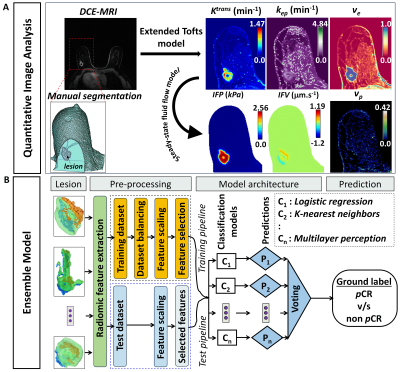 |
Computer Number: 46
2003. Ensemble
Machine Learning Model to Classify Pathologic Complete Response
from Pre-NAC Breast Cancer DCE-MRI Pharmacokinetic Maps
A. Bhowmik, S. Thakur, P. Kapetas, D. Giri, B. Williams, K.
Pinker, S. Eskreis-Winkler
Memorial Sloan Kettering Cancer Center, New York, United States
Impact: A machine learning model to classify pCR from
pre-NAC breast cancer DCE-MRI enables early prediction of
treatment response. This would allow clinicians to make
timely treatment adjustments and to alter treatment plans to
lower toxicity and improve patient outcomes.
|
|
 |
Computer Number: 47
2004. New
biomarkers’ exploration with multiparametric MRI for predicting
pathological response to neoadjuvant chemotherapy in breast
cancer
Y. Li, J. Guo, Y. Xue, L. Xie, H. Lu
Tianjin Medical University Cancer Institute and Hospital, Tianjin, China
Impact: The impact of this study is significant, as it
enhances breast cancer treatment by providing a reliable
predictive model for neoadjuvant chemotherapy response,
potentially improving patient outcomes and treatment
strategies.
|
|
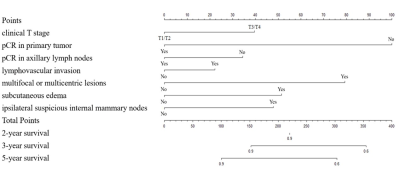 |
Computer Number: 48
2005. Development
and validation of a nomogram model for predicting disease-free
survival in breast cancer patients after neoadjuvant
chemotherapy
S. Chen, S. Che, M. Yang, Y. Chen, S. Wang, J. Li
Cancer Hospital Chinese Academy Of Medical Sciences, Shenzhen Center, Shenzhen, China
Impact: This nomogram model facilitates early
identification of high-risk recurrence factors, enabling
personalized treatment and potentially improving survival
outcomes for breast cancer patients post-NAC.
|
The International Society for Magnetic Resonance in Medicine is accredited by the Accreditation Council for Continuing Medical Education to provide continuing medical education for physicians.